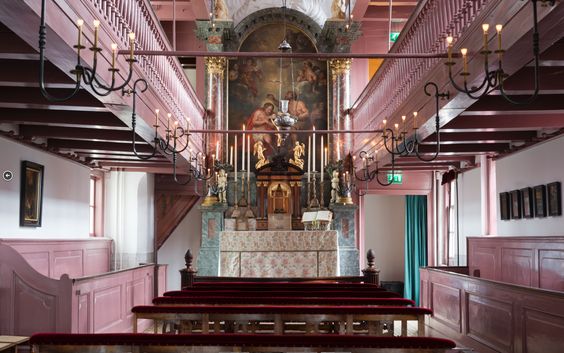Our Lord in the Attic

On October 31, 1517 – more than five hundred years ago – Martin Luther, a German monk and theologian, published his 95 theses: a controversial argument in which he addresses abuses within the Catholic Church. For example, the clergy had too much power and wealth and the clergy were very corrupt. The document causes great unrest within the Roman Catholic Church and heralds the beginning of the Reformation
The criticism of the Roman Catholic Church, combined with the necessary poverty and hatred of Spanish interference, gave rise to the Iconoclasm of 1566.
The Spanish Catholic leader of the Netherlands, Philip II, is furious about the iconoclasm. He sends his best general, the Duke of Alva, with an army of ten thousand men from Spain to the Netherlands. Alva must put things in order and punish those responsible for the iconoclasm.
The Iconoclasm therefore indirectly led to the outbreak of the Eighty Years' War with Spain (1568 to 1648) and the creation of the Republic of the Seven United Netherlands.
After 1648, Catholic worship was banned throughout the Republic of the United Netherlands. The Catholics had to give up their churches and were no longer eligible for most offices, but they were not expelled and masses in secret churches were tolerated.
A permit could be obtained to establish a secret church upon payment of recognition fees, which were enormous sums of money. There were rules attached to it. The churches were furnished in existing buildings and they were not allowed to be recognizable as such from the outside.
One of these tolerated churches was Ons' Lieve Heer op Atder. This house or secret church was dedicated to Saint Nicholas.
In 1661, three buildings were purchased by entrepreneur Jan Hartman. It concerned the corner house at Oudezijds Voorburgwal 40 and two adjacent alley houses. The ground floors of the buildings were furnished as Mr Hartman's home.
The secret church was set up on the top three floors of the three buildings. This has created a high space with double galleries along the long sides.
The church could be reached from the house via a stairway. This passed a small room, furnished as a bedroom for the chaplain. The church was also separately accessible via a wooden steep spiral staircase in the Heintje Hoeksteeg.
In the 19th century the secret churches lost their function. In 1888, the secret church became part of a museum. More than 80 years later in 1969, the church was thoroughly renovated.
In its current condition, the church no longer looks as Jan Hartman knew it. A lot has changed during the large-scale restoration that was completed in 2015.
This secret church is located in the city center of Amsterdam, on the corner of Oudezijds Voorburgwal and Heintje Hoekssteeg.
Fortunately, after the church became redundant, it was preserved. Its new function as a museum makes it possible to visit this beautiful secret church.
Museum Our dear Lord in the attic:
Oudezijds Voorburgwal 38-40
1012 GD Amsterdam
Phone : +31 (0)20 624 66 04 (Mon to Fri)
Email: info@opsolder.nl
Homepage: https://opsolder.nl/